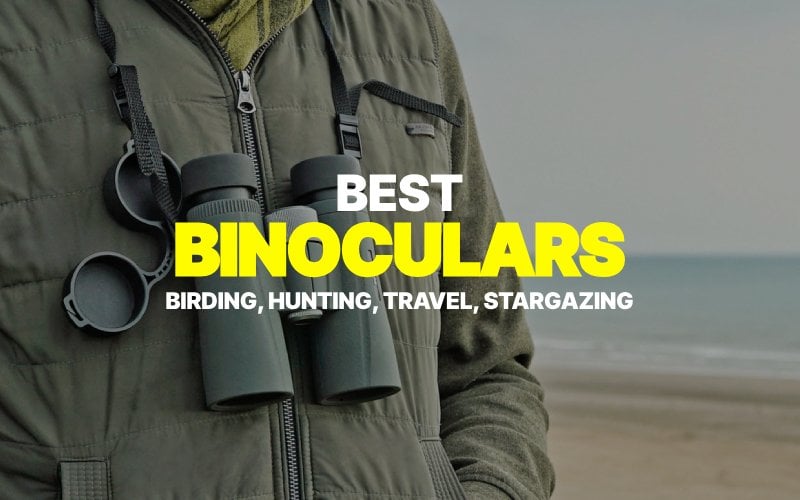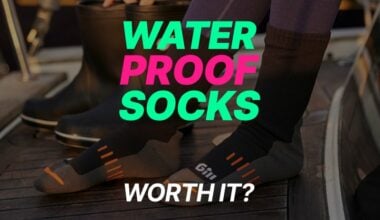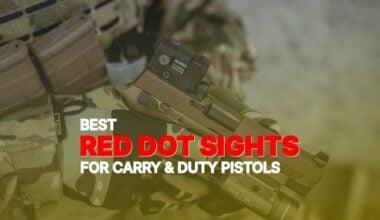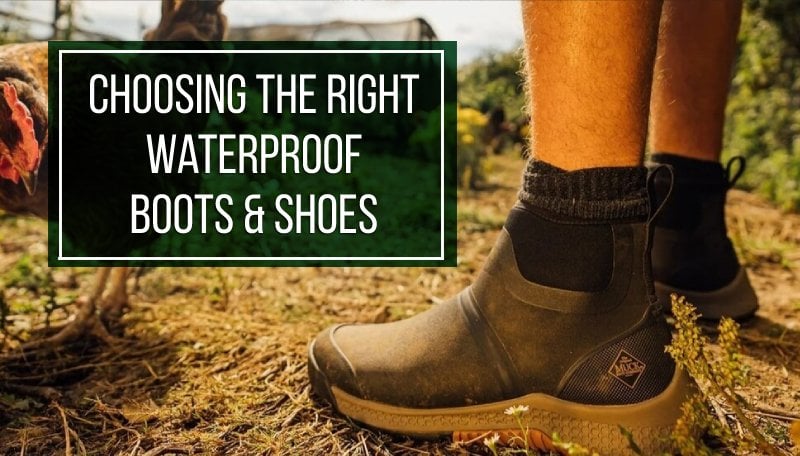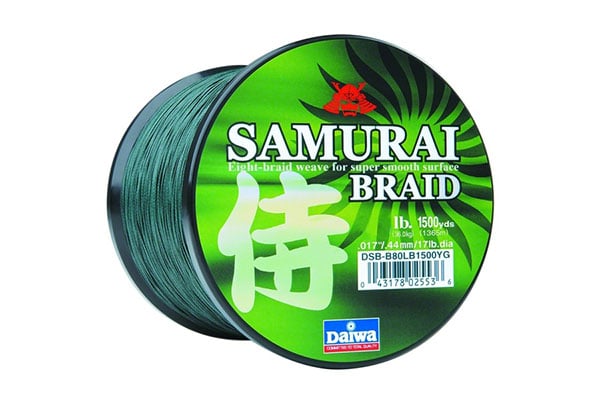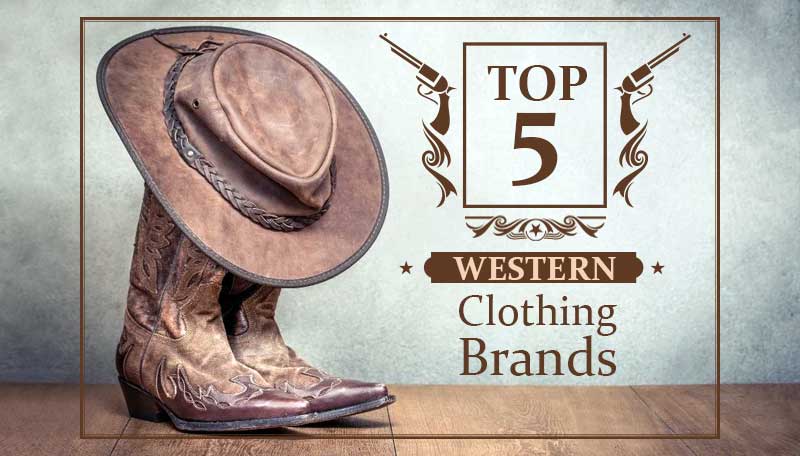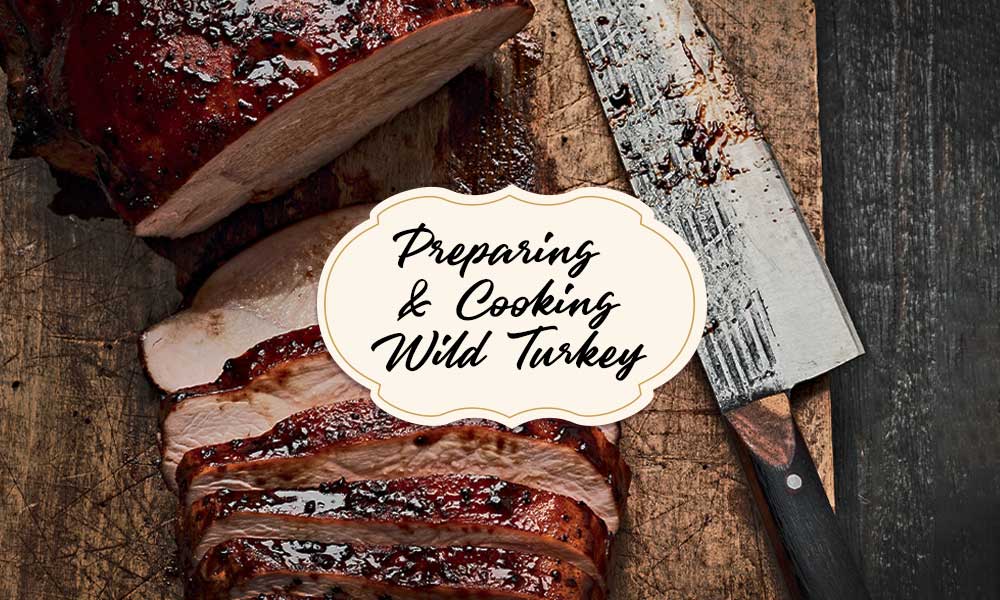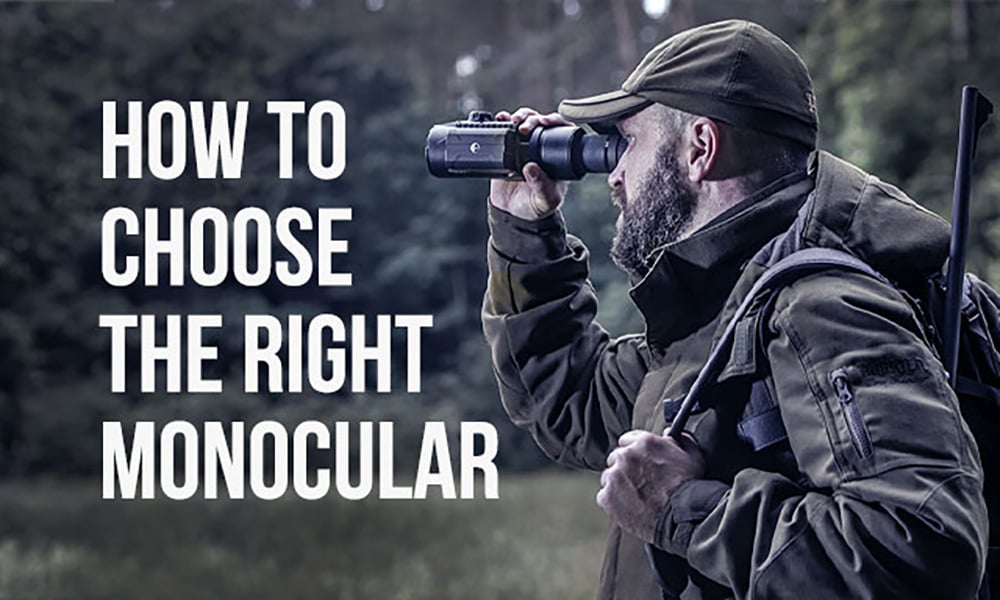When it comes to binoculars, one golden rule stands true: invest in the best quality you can afford. A budget pair is better than none, but you’ll always wish you’d gone for higher-quality optics. Want to know which models stand out? We’ve rounded up the best binoculars to help you find the perfect pair for your niche.
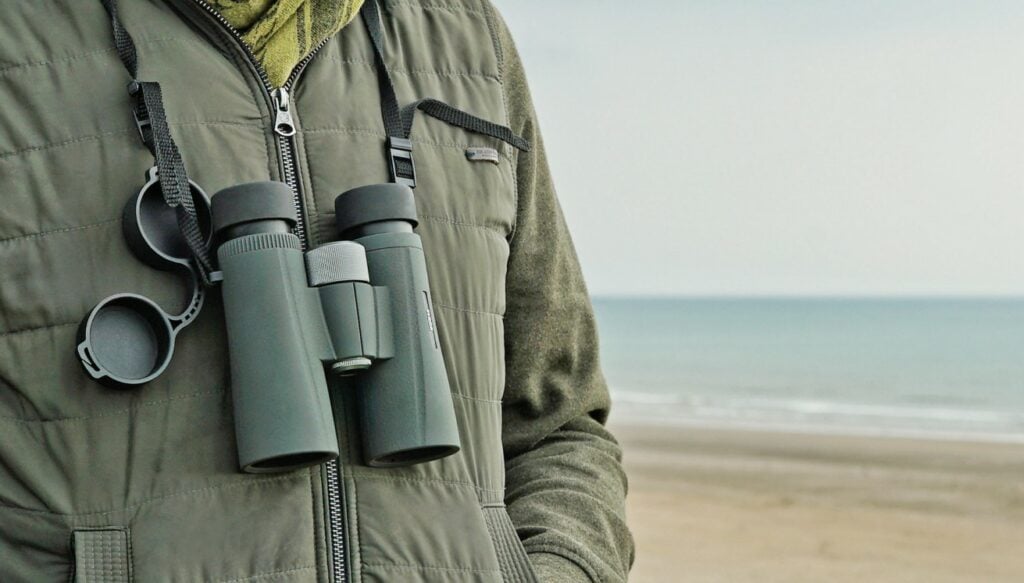
Parameters & Features to Consider in Binoculars
Magnification and Aperture
These are the two most crucial specs to consider. Magnification (the first number, e.g., 8x in 8×42) shows how much closer objects appear. Aperture (the second number, e.g., 42 in 8×42) is the lens diameter in millimeters, dictating how much light the binoculars gather. More magnification gets you closer but makes the image shakier (10x is typically the limit for hand-held use). Larger apertures enhance image quality in low light but make the device heavier and pricier. For example, binoculars with 15×70 or 25×100 are excellent for astronomy but not ideal for carrying around on a hike. For birding or nature observation, 10×42 or 8×42 are great options.
Field of View (FOV)
FOV determines how much of a scene you can see. It can be listed as angular (e.g., 6°) or linear (e.g., 322 ft at 1,000 yards). Lower magnifications increase FOV, making it easier to track moving targets like birds.
Interpupillary Distance (IPD)
Your IPD is the distance between your pupils. Most binoculars range from 55-70mm, but if your IPD doesn’t align with this, the binoculars could be uncomfortable to use.
Prism Design (Porro vs Roof)
Binoculars come in two common prism designs:
- Porro prisms offer better image quality at a lower cost but are bulkier.
- Roof prisms are compact, lightweight, and more durable but pricier.
Choose porro prisms for stargazing and roof prisms for outdoor activities like birding. hunting, or hiking.
Eye Relief
Eye relief refers to the distance from your eyes to the lenses while still seeing the full image. Long eye relief (10mm or more) is essential for eyeglass wearers. Models with fold-down or removable eyecups can help if the relief distance feels short.
Exit Pupil
This is the size of the light beam that enters your eyes, calculated by dividing aperture by magnification. For daytime use or older users (whose pupils are smaller), an exit pupil of 3-5mm is usually sufficient. Nighttime applications benefit from larger exit pupils, such as 7mm.
Focusing Mechanisms
You’ll typically find two options:
- Center Focus: Adjusts both lenses simultaneously and works well for general use.
- Individual Focus: Allows adjustments for each eye; great if the vision in your eyes differs.
Glass and Coatings
High-end binoculars come with fully multi-coated lenses, reducing glare and enhancing light transmission, especially in dim conditions. Certain glass types, like the HD or ED (extra-low dispersion) lenses, combat chromatic aberration and provide true-to-life colors.
While having bins with high-end lens coatings sounds appealing, they often yield only minor improvements for casual users. Don’t feel obligated to overspend if your needs are basic.
Housing Material
Materials like polycarbonate, aluminum, and magnesium impact durability, weight, and cost. Polycarbonate is cost-effective and sturdy, while magnesium offers the best mix of strength and low weight in premium models.
Special Features
Advanced features like image stabilization, range-finding, or night vision can be useful for niche needs but often come with trade-offs like added weight and cost.
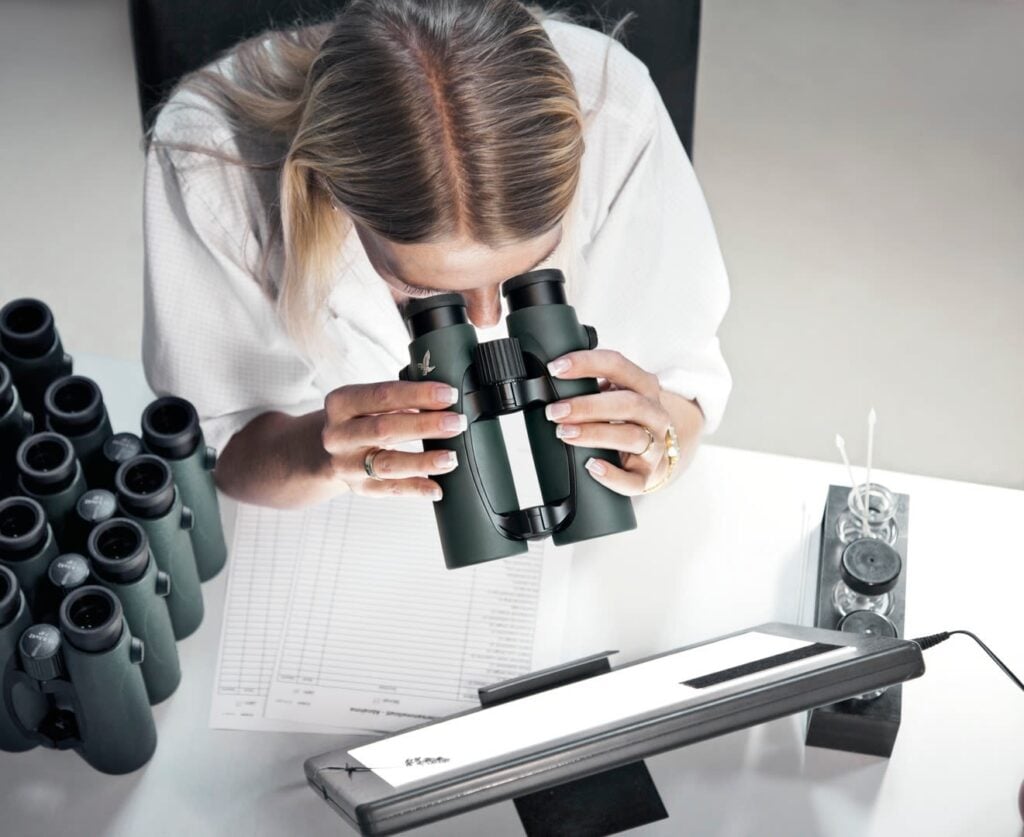
Reasons Why High Quality Binoculars Will Pay Off
Today, binocular shoppers face an embarrassment of riches. Even entry-level models offer solid performance, thanks to advancements in modern manufacturing. For around $50, you can get binoculars that get the job done. Spending $300-500, however, delivers better build quality and features like fully multi-coated lenses. For enthusiasts willing to shell out $2,000 or more, high-end brands like Zeiss or Swarovski offer unparalleled image quality and precision and might feel even better than your natural eye sight.
What makes high-end binoculars from brands like Swarovski, Zeiss, and Leica so expensive? It mostly comes down to exceptional optical quality and durability. Their reputation also plays into the price. But in the world of optics, higher prices do tend to reflect higher quality. Don’t dismiss expensive options outright; their premium cost is often well justified.
That said, mid-range binoculars like the Vortex Viper HD or Nikon Monarch offer great performance too. You get 70–80% of the quality of high-end models at just a fraction of the cost.
Now, let’s break down the key features and characteristics to look for when choosing the right pair of binoculars for you.
1. Optic Quality: What Are You Paying For?
Obviously, the biggest selling point of high-end binoculars is their premium glass, coatings, and coating technique. Their premium lenses boast edge-to-edge clarity, minimal chromatic aberration, and enhanced low-light performance. With high-end binoculars, you’ll notice every detail in a bird’s feathers or easily track wildlife like deer at dawn or dusk.
However, some argue that optical benefits diminish beyond the $1,000-$1,500 range. For example, Vortex Razor HD models, which retail for $950-1,100, compare favorably to higher-tier options, delivering excellent clarity at a fraction of the cost.
Lens Coating: The Cure for Better Light Transmission and Glare Reduction
Binocular lens coatings reduce light reflection on glass surfaces, so more light passes through to your eyes and less is lost to glare. Without coatings, each glass surface can reflect up to 5% of the light, significantly dimming the image. Let’s take a basic binocular with ten glass-to-air surfaces. Without coatings, only about 50-60% of incoming light actually reaches your eye. Single-layer coatings bring this figure closer to 90%, and modern multi-coatings can increase it up to about 95%. The difference is dramatic, especially in dim lighting.
But coatings aren’t just about light or brightness. They also impact color neutrality, contrast, and resistance to glare. A well-coated surface reduces visual noise, delivers richer contrast, and corrects for color tints caused by subpar coatings.
Types of Lens Coatings: Marketing Claims vs. Real-World Performance
When looking at binocular specs, pay close attention to the coating descriptions, as some brands may oversimplify or exaggerate the benefits. Terms like “multi-coated” carry little weight without clear specifications. Reputable brands will disclose precise coating details, while lesser-known models may use vague labels.
Coated – The term “coated” refers to the bare minimum – at least one glass surface in the binoculars has a single-layer anti-reflective (AR) coating. The rest of the surfaces are likely bare glass, which reflects a significant amount of light.
Fully Coated – This term suggests all glass-to-air surfaces are coated with a single layer of AR coating. While better than “coated,” prisms don’t always follow suit and may remain uncoated or inconsistently treated.
Multi-Coated – Binoculars labeled “multi-coated” feature multiple AR coatings on at least one lens surface. This does enhance light transmission, contrast, and glare reduction but the term can be misleading since not all surfaces may receive the same treatment. Frequently, the objectives or eyepieces have multi-coatings, but other surfaces may only have single coatings.
Fully Multi-Coated – This is the gold standard in consumer optics. All glass-to-air surfaces, including objectives, prisms, and eyepieces, are multi-coated with advanced AR coatings. These reduce light loss to less than 1% per surface, resulting in brighter, sharper, and more colorful images.
Prism Coatings – For prisms, the treatment varies. Porro prisms typically rely on total internal reflection (TIR) and don’t require reflective coatings. However, roof prisms often need phase-correction and dielectric coatings to enhance contrast and prevent light phase shift.
Orange Coatings?
Some budget binoculars come with flashy ruby or orange-coated lenses. While they might look cool, they don’t always mean better performance. Actually, darker or greenish coatings are usually a sign of higher-quality optics because they’re designed to cut down on reflections and improve light transmission. On the other hand, those bright orange coatings can cause glare and even reduce the amount of light that makes it through the lenses. Don’t be fooled by the flashy appearance!
Lens Glass: What Determines the Clarity
Ever looked through a pair of so-so binoculars and found the view blurry or lacking detail? That’s usually a result of poor-quality lens glass.
The lens glass is the central component that influences brightness, sharpness, and color fidelity. Cheap glass can create chromatic aberration – that annoying “color fringing” you see around objects – and squash fine details like plumage coloration on a bird. But with high-quality glass, those details come alive, even in dim lighting or at a distance.
Types of Lens Glass
Standard Optical Glass: Many entry-level binoculars use standard glass, which performs decently under average conditions but leaves plenty of room for improvement. Chromatic aberration and reduced brightness are common drawbacks in this range.
HD Glass: When a brand labels an optical instrument as “HD,” it typically refers to one of two things:
- High Density: Some brands, like Vortex, use “HD” to indicate that the device incorporates high-density, extra-low dispersion (ED) glass in its lens elements.
- High Definition: Other manufacturers use “HD” to describe a High Definition Optical System. Unlike “High Density,” this term refers to the entire optical path – from the objective lens to the eyepiece – and indicates that the system as a whole is designed to produce sharp, high-resolution images.
- The meaning of “HD” may differ across brands, and its quality varies depending on the manufacturer. For example:
- HD optics often include fully multi-coated lenses, phase-corrected prisms, and sometimes even protective coatings on the lens surfaces.
- However, some brands might use “HD” simply as a marketing term, which doesn’t guarantee superior performance.
ED Glass (Extra Low Dispersion): This term that carries a more consistent meaning across brands. ED glass is designed to reduce chromatic aberration by aligning light wavelengths more accurately, thereby producing sharper, more color-accurate images. ED specifically refers to lenses that include at least one element of ED glass.
However, the effectiveness of ED lenses depends on the overall design of the optical system. Poorly engineered bins with ED glass may still produce worse results than a well-designed system without it.
Use ED and HD as indicators of quality but don’t skim on deeper research.
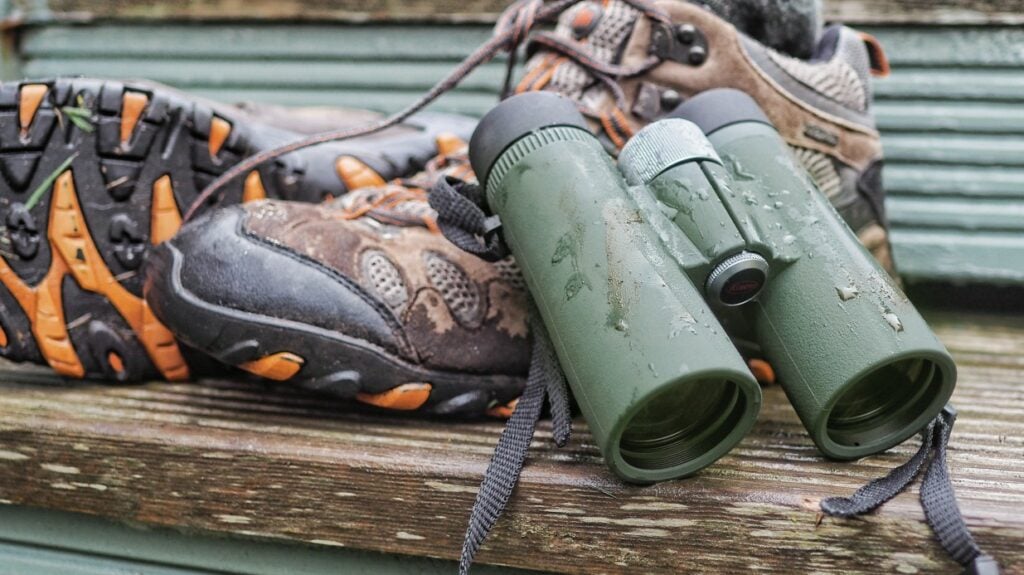
2. Durability and Build
Another major advantage of premium binoculars? They’re built to last a lifetime. High-quality models are often crafted using resilient materials such as magnesium alloy or carbon fiber that increase durability without extra weight. Many are also waterproof, fog-proof, and generally are built to perform well in extreme, unpredictable conditions where you can accidentally bump, drop, or get under a surprise rainstorm.
In contrast, cheap binoculars often feature a plastic chassis and plastic parts – focus wheel, eyecups, and eyepiece housings. While plastics keep the price low, they do compromise resilience and overall performance. For example, focus wheels on cheaper models tend to have inconsistencies, while eyecups might rattle or fail to stay in place.
Additionally, many budget binoculars aren’t fully sealed. They might be marketed as “weather-protected,” but they’re rarely truly waterproof or fog-proof. This means dust can get into the system, and you might experience internal fogging or even mold growth on the lenses.
3. Lifetime Warranty and Customer Service
Warranties are something many first-time binocular buyers overlook, but they can be a major deciding factor, especially if you’re investing in a high-tier optic. Free repairs or cleanings—even decades after purchase—make brands using a “no-questions-asked” approach, such as Swarovski, Vortex and Maven, especially appealing to serious outdoor enthusiasts.
Sure, binoculars with top-notch warranties may cost more upfront, but in the long run, you’ll save serious cash on repairs, replacements, or upgrades.
The Neuances of Warranties for Optics
Is It Truly Lifetime?
If you see the term “lifetime warranty,” don’t assume it’s straightforward. Check what exactly it covers. Like we mentioned Vortex and Maven, which offer unconditional lifetime warranties. Whatever you do to your bins, they’ll repair or replace them at no cost to you. On the other hand, some brands may only cover a set number of years.
Is It Transferable?
A transferable warranty means that if you sell your binoculars later, the new owner can still benefit from the warranty. This feature could seriously increase the resale value of your optics. And again, not all brands offer this. Some only extend their warranty to the original owner, with proof of purchase needed for repairs and replacements.
What’s Covered?
Does the warranty include accidental damage, or is it only for defects in manufacturing? This is an important detail to understand. Some brands, for instance, exclude water damage, even on binoculars labeled waterproof.
What’s the Claim Process Like?
A good warranty is useless if claiming it feels like pulling teeth. The warranty claims can be fast and painless or slow and inconsistent. If this is a concern, check reviews from other customers to see how smoothly the claims process goes.
Not All Budget Binoculars Are Bad!
Are all cheap binoculars a waste of money? Definitely not. While cheap bins (below $150) can be a gamble, there are some decent options out there if you know what to look for. If you’re working with a tight budget, porro prism designs usually offer better performance for the price compared to roof prisms.
The Middle Ground
So, as a beginner shopping for your first pair of binoculars, what should you go with – cheap entry bins under $150, mid-range bins, or high-end bins over $2000.
Well. high-end binoculars from brands like Swarovski and other German or Japanese manufacturers are known for unmatched clarity, effortless usability, and exceptional customer support. For some people, the old saying “buy once, cry once” holds true. Investing in a premium pair means you probably won’t need to upgrade for years (or even decades).
That said, you shouldn’t feel pressured to splurge on premium binoculars right off the bat. You can start with something in the mid range like Vortex, Athlon, and Kowa which offer excellent binoculars for the money.
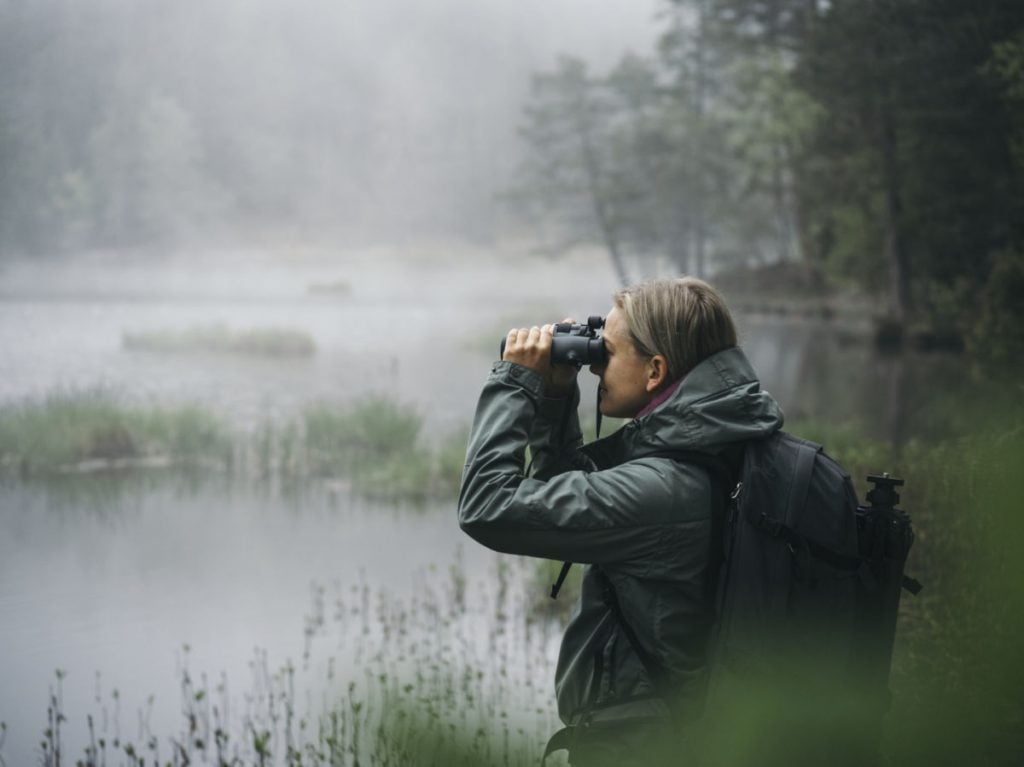
Quick Tips on How to Choose the Best Binoculars
Prioritize Anti-Reflective Coatings
Aim for fully multi-coated optics! This coating type greatly improves light transmission and reduces glare.
Don’t Underestimate Weight and Balance
Those cumbersome budget rigs might be tempting, but after an hour in-hand, you’ll regret not paying for lightweight ergonomic models.
Check Chromatic Aberration
Before settling on non-ED glass in the sub-$300 range, check for color fringing. Look for straight edges against bright backgrounds and ensure no noticeable halo effects distract your clarity.
Be Wary of Marketing Terms
Terms like “HD glass” are often generic. Verify whether they apply exclusively to lens systems or entire prisms. Transparency from trusted optics manufacturers often correlates with more trustworthy quality.
Be Specific
To narrow down choices, consider these questions:
- Field of Use: Are you searching for compact day-use options or heavy-duty clarity for open plains? (8×42 is versatile)
- Magnification: While 8x binoculars offer brighter and wider views, 10x is better for longer range observations.
- Lighting Conditions: For dawn birding or nocturnal wildlife, opt for larger exit pupils and ED glass.
- Durability: If you’re rugged outdoors (like hunters or mountaineers), lean toward waterproof and nitrogen-purged options.
BEST BINOCULARS FOR YOUR NEEDS AND NICHE
Best Binoculars for General Use
For varied uses like travel, events, or casual nature watching, opt for mid-sized designs like 8×32, 8×42, or 10×42. They strike a perfect balance between portability and image clarity. Look for rugged, waterproof models with long eye relief for added durability and ease of use.

HAWKE Vantage 8x42
$123.99
Price accurate at time of writing
The Hawke Vantage 8×42 binoculars deliver great performance at an unbeatable price under $150. With an 8×42 configuration, they strike the perfect balance between magnification and light-gathering, making them versatile for a variety of settings and lighting conditions. These binoculars are ideal for outdoor enthusiasts looking for dependable optics without overspending.
Specs:
- Magnification: 8x
- Objective: 42mm
- Coating: Fully Coated
- FOV, degrees: 7°
- FOV, ft/1000yds: 367ft / 1000yds
- Eye Relief: 18mm
- Exit Pupil: 5.3mm
- Interpupillary Distance: 56-74mm
- Weight: 19.6oz
- Fully coated optical system
- Rubber Coated Focus Wheel
- BAK-4 Roof Prisms
- Lightweight And Durable Rubber Coated Chassis
- Stay-On Lens Covers
- Twist-Up Eye Cups With Position Stops For Eye Relief

NIKON Monarch M5 8x42
$296.95
Price accurate at time of writing
The Nikon Monarch M5 8×42 is perfect for low-light situations, like dawn or dusk, when wildlife is most active. Featuring ED (Extra-low Dispersion) glass, it reduces distortion and chromatic aberrations for sharp, clear images. The dielectric high-reflective multilayer prism coatings enhance brightness and color accuracy, making every view vivid. With comfortable turn-and-slide eyecups and long eye relief, even eyeglass wearers can enjoy extended use with ease.
Specs:
- Magnification: 8x
- Objective: 42mm
- Coating: Fully Multi-Coated
- FOV, degrees: 6.4°
- FOV, ft/1000yds: 335ft / 1000yds
- Eye Relief: 19.5mm
- Exit Pupil: 5.25mm
- Interpupillary Distance: 56-72mm
- Weight: 22.2oz
- ED glass elements with anti-reflection fully multicoated optics
- Dielectric-coated and phase-corrected roof prisms
- High-eyepoint design provides ample space between your brow and the eyecups for a clear FOV
- Closed-bridge configuration
- Large slip center focus wheel
- Right eye dioptric adjustment collar
- Environmentally friendly Eco-Glass
- Textured protective rubber armoring

NIKON Monarch M7 10x42
$486.95
Price accurate at time of writing
The Nikon Monarch M7 10×42 is a versatile option for bird watching, hunting, or wildlife observation. It boasts an ergonomic, non-slip rubber design for comfortable handling and lightweight construction for long excursions. The multiple prism coatings enhance brightness and color, while its fog-proof and waterproof housing ensures durability in any weather.
Specs:
- Magnification: 10x
- Objective: 42mm
- Coating: Fully Multi-Coated
- FOV, degrees: 6.9°
- FOV, ft/1000yds: 362ft / 1000yds
- Close focus distance: 8.2 feet
- Eye Relief: 16.5mm
- Exit Pupil: 4.2mm
- Interpupillary Distance: 56-72mm
- Weight: 23.6oz
- ED glass elements with anti-reflection fully multicoated optics
- Dielectric-coated and phase-corrected roof prisms
- High-eyepoint design provides ample space between your brow and the eyecups for a clear FOV
- Closed-bridge configuration
- Large slip center focus wheel
- Right eye dioptric adjustment collar
- Environmentally friendly Eco-Glass
- Textured protective rubber armoring

SWAROVSKI NL Pure 8x42
$3,149.00
Price accurate at time of writing
The NL Pure 8×42 delivers simply amazing optical performance with a wide field of view and excellent sharpness almost to the edge of the frame. Despite the premium price, dedicated users report zero regrets due to the unmatched viewing experience that justifies the investment for frequent users.
Specs:
- Magnification: 8x
- Objective: 42mm
- Coating: Fully Multi-Coated
- FOV, degrees: 9.1°
- FOV, ft/1000yds: 399ft / 1000yds
- Eye Relief: 18mm
- Exit Pupil: 5.3mm
- Interpupillary Distance: 56-74mm
- Weight: 29.6oz
- Fluorite-Containing HD Glass Elements
- SWAROBRIGHT, SWAROTOP, SWARODUR Coatings
- Exotic Phase-coated BaK-4 prisms
- Long Eye Relief, Wide Exit Pupil
- Short Closed Bridge Design
- Three-Position Twist-Up Eyecups
- Field-Flattener Lens System
- Ultra-Wide 69 degrees Viewing Angle
- Nitrogen-Filled Fog & Waterproof
- Rubber-Armored Magnesium-Alloy Housing
Best Binoculars for Bird Watching
Spotting wildlife calls for higher magnifications like 8x or 10x to capture fine details. Binoculars with larger apertures (above 35mm) are helpful in low-light scenarios like dawn or dusk. For birdwatching or safaris, go for rugged models like 8×42 or 10×42, which balance magnification, brightness, and weight. 8x is better for birding in forests and jungles.

VORTEX Diamondback HD 8x42
$239.00
Price accurate at time of writing
The Diamondback HD offers surprising quality that compares favorably to more expensive models like the Monarch 7. Available at competitive price points, it delivers excellent value for hunters and birders needing reliable optics without breaking the bank.
Specs:
- Magnification: 8x
- Objective: 42mm
- Coating: Fully Multi-Coated
- FOV, degrees: 7.5°
- FOV, ft/1000yds: 393ft / 1000yds
- Close Focusing Distance: 5 feet
- Eye Relief: 17mm
- Exit Pupil: 5.3mm
- Interpupillary Distance: 55-73mm
- Weight: 21.8oz
- HD Optical System
- Fully Multi-Coated
- Roof Prisms with Dielectric Coating
- Ultra-hard, scratch-resistant ArmorTek coating
- Rubber Armor
- Waterproof, shockproof and fogproof
- Adjustable Eyecups
- Center Focus Wheel
- Diopter adjusts for differences in a user's eyes
- Compatible with a tripod adapter

KOWA BD II 42mm XD Wide Angle 10x42
$399.00
Price accurate at time of writing
This Kowa binocular stands out with its incredible field of view of 378 feet at 1,000 yards, making it ideal for tracking birds in motion. It features a 5.9-foot close focus, ED glass objectives for reduced chromatic aberration, and multi-layer anti-reflective coatings for superior clarity. The binoculars are built to handle tough conditions, with water- and dirt-repellent KR coatings, making them perfect for serious birding.
Specs:
- Magnification: 10x
- Objective: 42mm
- Coating: All-Surface Multi-Coating
- FOV, degrees: 7.2°
- FOV, ft/1000yds: 378ft / 1000yds
- Eye Relief: 16.5mm
- Exit Pupil: 4.2mm
- Interpupillary Distance: 57-76mm
- Weight: 22.5oz
- Kowa's XD Lenses (eXtra-low) dispersion glass
- Schmidt-Pechan Roof Prism Lens and C(3) Coating
- C(3) coating increases reflectivity by 99%
- Waterproof to JIS Protection Class 7; filled with dry nitrogen gas
- Twist-up multi-step eyecups

LEICA Trinovid HD 8x42
$999.00
Price accurate at time of writing
The Trinovid HD 8×42 provides excellent value at one-third the price of premium Leica models while being noticeably lighter and offering better close focus at around 5.9 feet. Though it’s not as sharp as top-tier models, the difference is not huge, making it ideal for serious birders seeking premium quality without the maximum price.
Specs:
- Magnification: 8x
- Objective: 42mm
- Coating: Fully Multi-Coated
- FOV, degrees: 7.2°
- FOV, ft/1000yds: 372ft / 1000yds
- Close Focusing Distance: 1.8m
- Eye Relief: 17mm
- Exit Pupil: 5.25mm
- Interpupillary Distance: 58-76mm
- Weight: 25.75oz
- Phase-Corrected Roof Prisms
- Fully Multi-Coated Optics
- Short 6' Close Focus Distance
- Nitrogen-Filled, Water/Fogproof
- Lightweight Magnesium Alloy Chassis
- Large Center Focusing Knob
- Tripod Mountable with Optional Adapter
- Twist-Up Click-Stop Eyecups
- Includes Adventure Strap Harness System

SWAROVSKI NL Pure 10x42
$3,199.00
Price accurate at time of writing
The NL Pure 10×42 offers an exceptionally wide field of view with excellent sharpness nearly to the edge of the field stop. The 10x magnification provides additional reach while maintaining the NL Pure line’s superior optical performance, making it perfect for dedicated birders who need extra magnification without sacrificing image quality.
Specs:
- Magnification: 10x
- Objective: 42mm
- Coating: Fully Multi-Coated
- FOV, degrees: 7.6°
- FOV, ft/1000yds: 399ft / 1000yds
- Close Focusing Distance: 2m
- Eye Relief: 18mm
- Exit Pupil: 4mm
- Interpupillary Distance: 56-74mm
- Weight: 30oz
- Fluorite-Containing HD Glass Elements
- SWAROBRIGHT, SWAROTOP, SWARODUR Coatings
- Exotic Phase-coated BaK-4 prisms
- Long Eye Relief, Wide Exit Pupil
- Short Closed Bridge Design
- Three-Position Twist-Up Eyecups
- Field-Flattener Lens System
- Ultra-Wide 69 degrees Viewing Angle
- Nitrogen-Filled Fog & Waterproof
- Rubber-Armored Magnesium-Alloy Housing

VORTEX Diamondback HD 10x42
$249.00
Price accurate at time of writing
The Diamondback HD offers surprising quality that compares favorably to more expensive models like the Monarch 7. Available at competitive price points, it delivers excellent value for hunters needing reliable optics without breaking the bank.
Specs:
- Magnification: 10x
- Objective: 42mm
- Coating: Fully Multi-Coated
- FOV, degrees: 6.3°
- FOV, ft/1000yds: 330ft / 1000yds
- Close Focusing Distance: 5 feet
- Eye Relief: 15mm
- Exit Pupil: 4.2mm
- Interpupillary Distance: 55-73mm
- Weight: 21.3oz
- HD Optical System
- Fully Multi-Coated
- Roof Prisms with Dielectric Coating
- Ultra-hard, scratch-resistant ArmorTek coating
- Rubber Armor
- Waterproof, shockproof and fogproof
- Adjustable Eyecups
- Center Focus Wheel
- Diopter adjusts for differences in a user's eyes
- Compatible with a tripod adapter

VORTEX Viper HD 10x42
$499.00
Price accurate at time of writing
The Viper HD represents a significant upgrade from entry-level optics, providing premium features at $500. Users report substantial improvement in viewing experience over cheaper options, making it ideal for serious hunters wanting high performance without reaching for the most expensive tier.
Specs:
- Magnification: 10x
- Objective: 42mm
- Coating: Fully Multi-Coated
- FOV, degrees: 6.5°
- FOV, ft/1000yds: 341ft / 1000yds
- Close Focusing Distance: 6.5 feet
- Eye Relief: 17mm
- Exit Pupil: 4.2mm
- Interpupillary Distance: 56-75mm
- Weight: 24.9oz
- HD extra-low dispersion glass
- XR fully multi-coated lenses
- Roof Prisms with Dielectric Coating
- Phase Correction
- Ultra-hard, scratch-resistant ArmorTek coating
- Rubber Armor
- Waterproof and Fogproof Construction
- Adjustable Eyecups
- Center Focus Wheel
- Locking Diopter
- Compatible with a tripod adapter

VORTEX Razor HD 10x50
The Vortex Razor HD 10×50 binoculars deliver exceptional optical performance with outstanding clarity, sharpness, and true-to-life color. Designed for versatility, their advanced HD optical system and larger objective lenses excel in low-light conditions, making them perfect for outdoor enthusiasts and hunters. Durable, lightweight, and built for all-weather use, these binoculars are an ideal choice for those who need reliable performance in any environment.
Specs:
- Magnification: 10x
- Objective: 50mm
- Coating: Fully Multi-Coated
- FOV, degrees: 6°
- FOV, ft/1000yds: 315ft / 1000yds
- Close Focusing Distance: 10 feet
- Eye Relief: 16.5mm
- Exit Pupil: 5mm
- Interpupillary Distance: 57-74mm
- Weight: 28.1oz
- APO optical system combined with HD glass
- HD (High Density) extra-low dispersion glass
- XRPlus premium fully multi-coated lenses
- Dielectric multi-layer prism coatings
- Phase-corrected prisms
- Plasma Tech for unparalleled coating durability and performance
- ArmorTek protects exterior lenses from scratches, oil and dirt
- Rubber armor
- Argon gas purging with o-ring seals
- Magnesium chassis

VORTEX Razor UHD 12x50
$1,899.00
Price accurate at time of writing
The VORTEX Razor UHD 12×50 binoculars offer unparalleled clarity and brightness, thanks to their premium Ultra High Definition optical system. Perfect for detailed long-range viewing, they provide enhanced edge-to-edge sharpness and vibrant color accuracy. Built with rugged durability and a lightweight magnesium chassis, they are ideal for adventurers who demand high-performance optics in all conditions.
Specs:
- Magnification: 12x
- Objective: 50mm
- Coating: Fully Multi-Coated
- FOV, degrees: 5.5°
- FOV, ft/1000yds: 288ft / 1000yds
- Close Focusing Distance: 6.6 feet
- Eye Relief: 17mm
- Exit Pupil: 4.1mm
- Interpupillary Distance: 56-76mm
- Weight: 36.1oz
- UHD Optical System
- XR Plus Lens Coatings
- Unmatched clarity and low-light performance
- Magnesium Chassis
- Abbe-Koenig Prism
- True Open Hinge
- Adjustable Eyecups
- Center Focus Wheel
- ArmorTek Coating, Rubber Armor
- Waterproof, Fogproof, Shockproof
- Tripod Adaptable

NIKON LaserForce 10x42
The LaserForce 10×42 combines rangefinding precision with Nikon’s optical clarity, offering reliable distance measurement (up to 1,000+ yards). One of the best affordable rangefinding binoculars on the market.
Specs:
- Magnification: 10x
- Objective: 42mm
- Coating: Fully multi-coated
- FOV, degrees: 6.1°
- FOV, ft/1000yds: 320ft / 1000yds
- Close Focusing Distance: 23 ft
- Eye Relief: 15.5mm
- Exit Pupil: 4.2mm
- Interpupillary Distance: 58-72mm
- Weight: 30.9oz
- Range: 12 up to approx. 1900 yds
- Ballistic function: no
- Lead and Arsenic-Free ED Glass Elements
- Armored Aluminum Alloy Chassis
- Nikon’s ID Technology to compensate for incline or decline angles
- Class 1 Eye-Safe IR Laser
- Large Center Focusing Knob
- Displays Range in Yards or Meters
- Inclinometer Measures Relative Angle
- Closed-Bridge Configuration
- Twist-Up Click-Stop Eyecups

LEUPOLD BX-4 Range HD TBR/W 10x42
$1,399.99
Price accurate at time of writing
The BX-4 Range HD features True Ballistic Range (TBR/W) technology for angled shot compensation. Its motion-activated display and Pinpoint Laser System ensure fast, accurate readings, while Leupold’s HD optical coatings deliver bright, sharp images in low light.
Specs:
- Magnification: 10x
- Objective: 42mm
- Coating: Fully multi-coated
- FOV, degrees: 6.2°
- FOV, ft/1000yds: 334ft / 1000yds
- Close Focusing Distance: 13 ft
- Eye Relief: 17mm
- Exit Pupil: 4.2mm
- Interpupillary Distance: 56-76mm
- Weight: 39oz
- Range: 12 up to approx. 2600 yds
- Ballistic function: yes
- Elite Optical System
- Built-in 1/4-20 rotatable tripod adapter port
- Ergonomic design
- Smooth focusing system
- Removable twist-up eyecups
- Line of Sight (LOS) calculates the distance to a target in a straight line
- True Ballistic Range (TBR) technology and Bow Mode provide ballistically calculated ranges
- Waterproof and fogproof

LEICA Geovid R 10x42
$1,599.00
Price accurate at time of writing
The Geovid R stands out with integrated ballistic compensation and class-leading optical performance, pairing Leica’s HDC/Multicoating for exceptional light transmission. Its ergonomic design and precise rangefinding (up to 2,000+ yards) make it a top choice for hunters and precision shooters.
Specs:
- Magnification: 10x
- Objective: 42mm
- Coating: HDC multilayer coating
- FOV, degrees: 6.3°
- FOV, ft/1000yds: 330ft / 1000yds
- Close Focusing Distance: 18.4 ft / 5.6 m
- Eye Relief: 14.5mm
- Exit Pupil: 4.2mm
- Interpupillary Distance: 58-74mm
- Weight: 33.7oz
- Range: 10 up to approx. 1,800 m
- Equivalent horizontal range (EHR): 10 up to approx. 1,100 m
- Measuring time: 0.3 sec
- Ballistic function: no
- Best-in-class optical performance
- Absolutely precise laser rangefinding
- Multi-Coated Premium Optics
- Intuitive Operation
- EHR Mode for Angle Shots
- Smart Secondary-Target Logic
- Large center focus dial and strategically placed buttons
- Includes cordura nylon case, neoprene strap, lens caps, and battery

SWAROVSKI EL Range TA 10x42
$3,699.00
Price accurate at time of writing
The EL Range TA offers Track-Activated (TA) ranging for moving targets and Swarovski’s legendary optical clarity with FieldPro ergonomics. Its ultra-precise rangefinder (sub-meter accuracy) and adaptive brightness display excel in dynamic environments.
Specs:
- Magnification: 10x
- Objective: 42mm
- Coating: Fully multi-coated
- FOV, degrees: 6.8°
- FOV, ft/1000yds: 361ft / 1000yds
- Close Focusing Distance: 16.4 ft
- Eye Relief: 19mm
- Exit Pupil: 4.2mm
- Interpupillary Distance: 56-74mm
- Weight: 32.6oz
- Range: 10 to 2200yd
- Equivalent horizontal range (EHR): 10 up to approx. 1,100 m
- Ballistic function: no
- Swarovision coatings increase light transmission and enhance color fidelity
- Open-bridge/dual-hinge configuration reduces weight without sacrificing strength
- Large, knurled center focus wheel
- In-view LCD display
- Tracking Assistant narrows down location of game after successful shot
- Calculates angle, temperature, and air pressure
- Runtime up to 2000 hours
Best Compact Binoculars (for traveling)
When sightseeing or hiking, portability is key. Lower magnifications (4x to 8x) work well, offering a wider view to take in entire scenes. Compact and lightweight models like 6×32 or 8×42 are ideal for prolonged use and easy packing. Waterproof and shock-resistant designs are also recommended.

NIKON Prostaff P7 8x30
$157.99
Price accurate at time of writing
The NIKON Prostaff P7 8×30 binoculars are lightweight, easy to carry, and deliver sharp, bright images with their multi-coated lenses. They offer a wide field of view, making them great for activities like birdwatching or hiking. Built to be waterproof and durable, they are a reliable choice for any outdoor adventure.
Specs:
- Magnification: 8x
- Objective: 30mm
- Coating: Multilayer coatings
- FOV, degrees: 8.7°
- FOV, ft/1000yds: 456ft / 1000yds
- Close Focusing Distance: 8.2 feet
- Eye Relief: 15.4mm
- Exit Pupil: 3.8mm
- Interpupillary Distance: 56-72mm
- Weight: 17.1oz
- Phase-Correction coating is applied to the roof prisms
- Dielectric high-reflective multilayer prism coating
- Oil and water repellent coating
- Lightweight, comfortable and tough
- Waterproof, Nitrogen Filled

HAWKE Frontier HD X 8x32
$271.99
Price accurate at time of writing
The HAWKE Frontier HD X 8×32 binoculars are compact, lightweight, and provide clear, bright images with their advanced HD optics. Perfect for outdoor activities, they offer a wide field of view and exceptional color accuracy. Built to be durable and waterproof, they are a dependable choice for exploring in any weather.
Specs:
- Magnification: 8x
- Objective: 32mm
- Coating: Fully Multi-Coated Lenses
- FOV, degrees: 7.7°
- FOV, ft/1000yds: 405ft / 1000yds
- Close Focusing Distance: 8.2ft
- Eye Relief: 16mm
- Exit Pupil: 4mm
- Interpupillary Distance: 56-74mm
- Weight: 19oz
- Dielectric Coatings
- High Resolution Phase Corrected BAK-4 Roof Prisms
- Water Repellent Lens Coatings
- Magnesium Alloy Chassis
- Focus from 2.5m
- Replaceable Twist-Up Eye Cups with Position Stops
- Stay-On Lens Covers
- Waterproofing to IPX7 and fog proofing
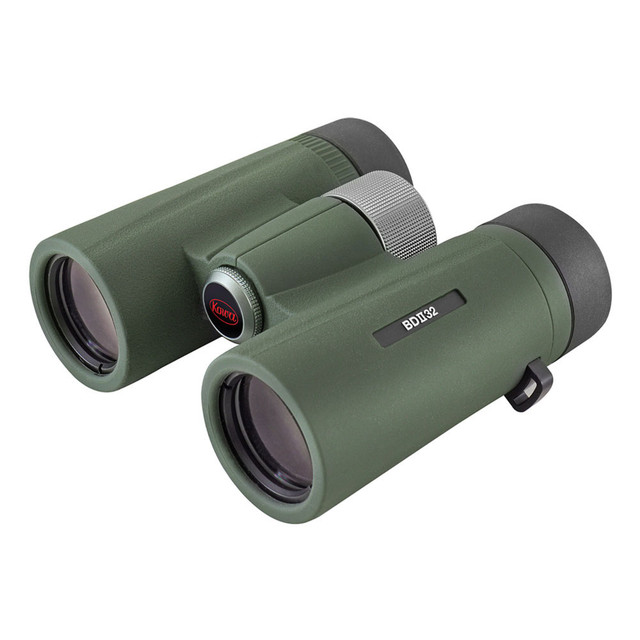
KOWA BDII XD Wide Angle 6x32
$399.00
Price accurate at time of writing
The KOWA BDII XD Wide Angle 6×32 binoculars offer an ultra-wide field of view and outstanding clarity, making them perfect for nature observation and scenic viewing. Their XD lenses enhance image sharpness and color reproduction, delivering vivid and detailed views. Lightweight and durable.
Specs:
- Magnification: 6x
- Objective: 32mm
- Coating: All-Surface Multi-Coating
- FOV, degrees: 10°
- FOV, ft/1000yds: 527ft / 1000yds
- Close Focusing Distance: 1.3 feet
- Eye Relief: 17mm
- Exit Pupil: 4.9mm
- Interpupillary Distance: 57-76mm
- Weight: 18.8oz
- XD Lenses (eXtra-low) dispersion glass
- Schmidt-Pechan Roof Prism Lens and C(3) Coating
- Highly reflective C(3) coating increases reflectivity by 99%
- KR coating protects the lenses from dirt and other foreign residues
- All-Surface Multi-Coating
- Housing is waterproof to JIS Protection Class 7 and filled with dry nitrogen gas
- Twist-up multi-step eyecups
- Magnesium Alloy body

SWAROVSKI CL Companion 8x30
$1,469.00
Price accurate at time of writing
The SWAROVSKI CL Companion 8×30 binoculars combine premium optics with a sleek, lightweight design, making them ideal for travel. They provide bright, detailed views while being easy to carry and use on long journeys.
Specs:
- Magnification: 8x
- Objective: 30mm
- Coating: Fully Multi-Coating
- FOV, degrees: 7.6°
- FOV, ft/1000yds: 396ft / 1000yds
- Close Focusing Distance: 9.8 feet
- Eye Relief: 16mm
- Exit Pupil: 3.8mm
- Interpupillary Distance: 55-74mm
- Weight: 17.3oz
- BAK4 prisms deliver a round exit pupil and a crisp and clear image
- Wide 62 deg apparent angle of view helps to minimize the appearance of distracting hand-shake
- SWAROBRIGHT phase-correcting prism coating
- SWAROTOP anti-reflective multicoating
- SWARODUR exterior lens coatings offer scratch resistance
- Water-Resistant, Nitrogen Filled
Best Binoculars for Long Range Observation and Stargazing
For stargazing, aperture matters most. Larger lenses (50mm or more) gather more light, essential for dim celestial objects. Models like 10×50 are good for hand-held use, while 15×70 or 20×80 are better for tripod-mounted viewing. Prioritize binoculars with tripod compatibility and consider a parallelogram mount for extended sky-watching sessions.

VORTEX Diamondback HD 15x56
$319.00
Price accurate at time of writing
The Diamondback HD 15×56 offers high magnification and light-gathering capability at a budget-friendly price. The model delivers solid optical performance for its price, backed by Vortex’s lifetime warranty, making it a practical choice for entry-level astronomy or distant terrestrial viewing.
Specs:
- Magnification: 15x
- Objective: 56mm
- Coating: Fully Multi-Coated
- FOV, degrees: 4.36°
- FOV, ft/1000yds: 230ft / 1000yds
- Close Focusing Distance: 14 feet
- Eye Relief: 15.6mm
- Exit Pupil: 3.7mm
- Interpupillary Distance: 59-76mm
- Weight: 34.8oz
- HD Optical System
- Fully Multi-Coated
- Dielectric Coating; Phase Correction Coating
- Ultra-hard, scratch-resistant ArmorTek coating; Rubber Armor
- Shockproof, Waterproof & Fogproof
- Magnesium Chassis
- Tripod adapter included

LEUPOLD BX-5 Santiam HD 15x56
$1,399.99
Price accurate at time of writing
The BX-5 Santiam HD 15×56 delivers exceptional optical clarity and brightness, outperforming competitors in sharpness and detail resolution. Its robust build quality and advanced low-light coatings make it ideal for hunters and astronomers needing reliable performance in challenging conditions.
Specs:
- Magnification: 15x
- Objective: 56mm
- Coating: Fully Multi-Coated
- FOV, degrees: 4.4°
- FOV, ft/1000yds: 231ft / 1000yds
- Close Focusing Distance: 9.84 feet
- Eye Relief: 18mm
- Exit Pupil: 3.7mm
- Interpupillary Distance: 58-74mm
- Weight: 45oz
- Phase-Corrected BAK4 Roof Prisms
- Index-Matched Fully Multi-Coated Optics
- Lead-Free Calcium-Fluoride Glass
- Extra Low-Dispersion Objectives
- Open-Bridge/Dual-Hinge Configuration
- Center Focus/Dioptric Adjustment Wheel
- Nitrogen-Filled, Water and Fogproof
- Tripod Mountable With Included Adapter
- Twist-Up Click-Stop Eyecups

SWAROVSKI SLC 15x56 WB
The SLC 15×56 proves itself as the best big glass available with superior light-gathering ability that particularly shines during dusk observations. Built to last a lifetime, these binoculars excel at long-distance viewing across challenging terrain, making them the ultimate choice for serious astronomers and long-range observers despite their premium price.
Specs:
- Magnification: 15x
- Objective: 56mm
- Coating: Fully Multi-Coated
- FOV, degrees: 4.5°
- FOV, ft/1000yds: 234ft / 1000yds
- Close Focusing Distance: 12.8 feet
- Eye Relief: 16mm
- Exit Pupil: 3.7mm
- Interpupillary Distance: 55-76mm
- Weight: 42.3oz
- Fluoride HD lens
- Fully multi-coated lenses
- Dielectric Prism coatings
- Hydrophobic external lens coating
- Phase Correction
- BaK-4 Prisms
- Single-bridge design
- Magnesium Body
- Rugged Rubber Armoring
- Removable Multi-Position Eyecups
- Central Focus Wheel
- Central Diopter
- Tripod adaptable
- Waterproof and Fog-proof
